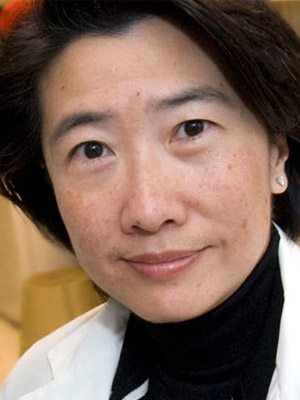
Kawasaki disease is most likely a rheumatologic condition associated with an overactive immune response to infection. And while the disease has long been viewed as being driven by TNF, new findings implicate interleukin 1β (IL1β).
“A collaboration has identified genetic risk factors of Kawasaki disease and the pathways that make kids’ immune systems twitchy and prone to developing Kawasaki disease,” said Rae S.M. Yeung, MD, PhD, Senior Scientist in the Cell Biology Program at The Hospital for Sick Children and Professor of Paediatrics and Immunology at the University of Toronto, Canada.
“We have confirmed the findings in an animal model of Kawasaki disease and found the same IL-1β involvement using machine learning,” she continued. “That finding changes our approach to Kawasaki disease and our management.”
Dr. Yeung will open the Clinical and Translational Research session Kawasaki Disease Treatment: Old & New in 2019, which takes place from 11:00 am – 12:00 pm Monday in Room B216-B217, Building B in the Georgia World Congress Center. Kawasaki disease is an acute febrile illness, most often seen in children. It can be self-limiting and disappear within a few months, but is also the most common cause of acquired heart disease in developed countries.
“There has been a lot of controversy in the optimal treatment of Kawasaki disease, much of it based on historical approaches rather than on data,” Dr. Yeung said. “The most recent guidelines were sponsored by the American Heart Association, but the pathogenesis has been something of a mystery.”
What has long been clear is that Kawasaki disease looks like an infectious disease. If one child in a family gets it, siblings are more likely to show symptoms, Dr. Yeung said. The disease often spreads in schools and other group situations. It is more common in winter than in summer. And a specific infectious agent can be isolated in a third to half of cases, one reason it is so often treated by infectious disease specialists.
The actual infection seldom lives long. The problem is that infection leads to an intense immune response that can result in vasculitis, which attracts interest from rheumatology. The vasculitis is most severe in the coronary vessels, which involves cardiology.
Kawasaki disease is often mistaken for rheumatic fever, scarlet fever, streptococcal infection, or other common conditions. Intravenous immune globulin (IVIG) has long been the standard treatment, with infliximab and other anti-TNF agents entering the picture more recently. None of the familiar treatments were as effective as clinicians and patients wanted.
Japanese studies found that while IVIG can help, about 20 percent of patients progressed to severe coronary artery disease. Adding corticosteroids reduced the incidence of coronary artery abnormalities, noted Toru Kobayashi, MD, PhD, Director of Management and Strategy and Chief of Biostatistics at the National Center for Child Health and Development, Tokyo, Japan.
The basic problem is that those familiar management strategies are based on historical treatment patterns, Dr. Yeung said. Recognizing the IL-1β pathway leading the inflammasome activation led to two clinical trials of anti-IL-1β agents. A trial is underway in the United States, another in France.
“A clear finding that it is one arm of the immune system involved in Kawasaki disease and not the other changes your approach entirely,” she said. “We are thinking of Kawasaki disease as a fever syndrome. This symposium will combine the basic science of genetic discovery with clinical data to support the new management approaches. And we will end with a look at work that is now under way on a new Kawasaki disease guideline from the ACR and the Vasculitis Foundation.”
